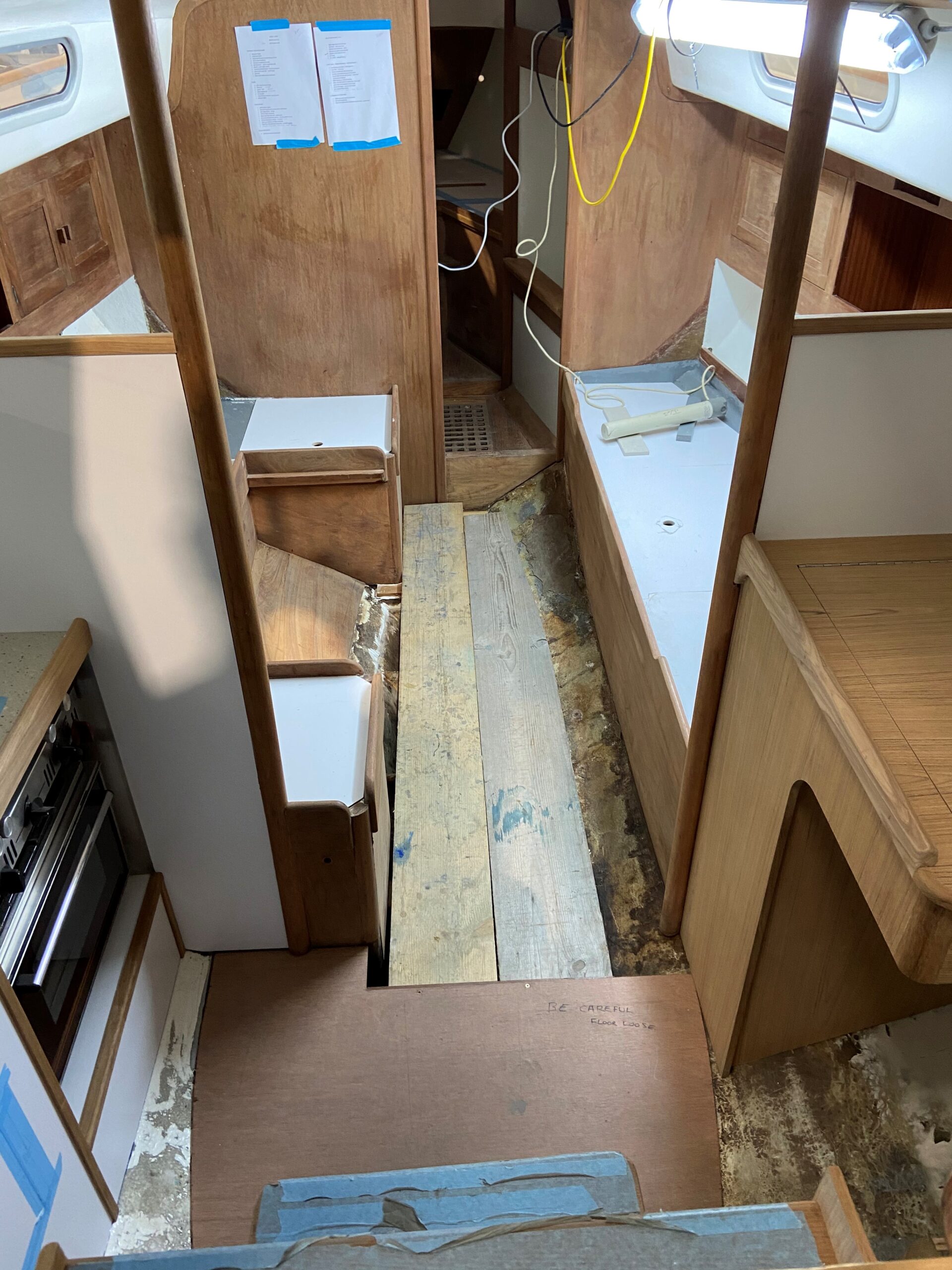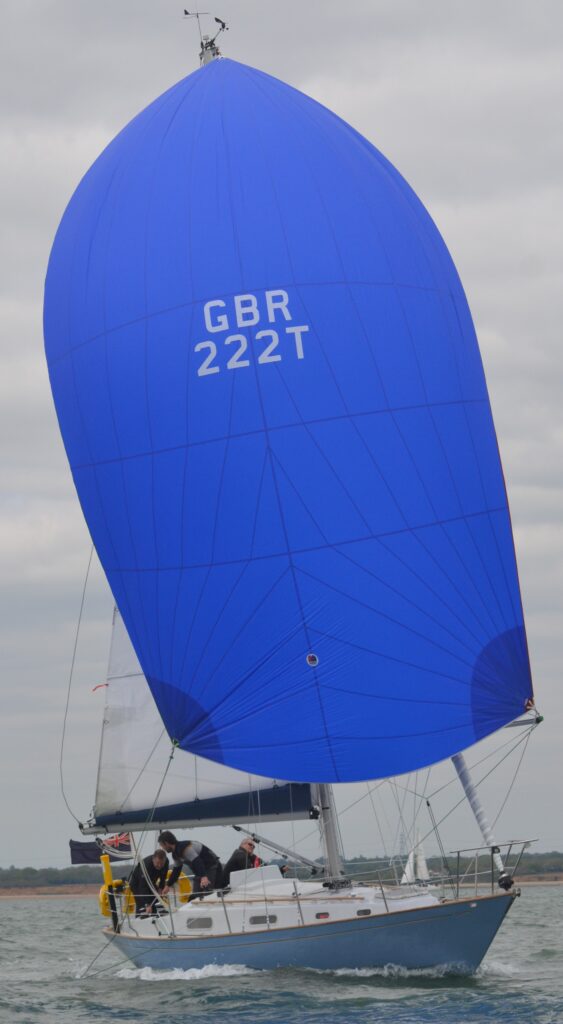I am the guy who always said he was never going to own his own boat.
For many years, I have had no shortage of sailing in a variety of boats and in a variety of locations. Whether it be teaching, racing, or cruising, there always seemed to be an opportunity to get out on the water on lots of different boats. My view was that variety was, very much, the spice of life. It seemed like madness not to enjoy getting on the water this way.
The big downside was the lack of control. I needed to fit in with other people’s projects. That was fine but, for a couple of years, I’d harboured the idea of sailing around parts of the coastline that are rarely seen. Dreaming of getting out of the “theme park” that is the Solent and exploring further into the Southwest perhaps Falmouth and the Scillies, heading up the Irish sea and then sailing on the West Coast of Scotland. That sort of project really demands its own boat. I looked at chartering, but it was difficult to find something for the right length of time that was the right type of boat, or at a cost that I could bear.
The next option I considered was the idea of buying a reasonably priced old boat in good condition that we could run for a year, do the job, and then sell on. In theory making the cost of the project only one year’s worth of running costs. I then needed to look at what boat I wanted. Talking to friends, the term “something like a Contessa 32” kept coming up; a good boat, the right size, easily managed by two. There are a lot of Contessa 32s around (maybe 700+), they are normally well looked after, and the resale value is steady. The more I looked, the more the Contessa 32 seemed to be the right answer. I joined the Contessa 32 Class Association and certainly found them to be an engaging, helpful, and informative bunch.
Timing was a big question. I started thinking about this in 2018 and I wanted to do all this before I was sixty (in 2022). My work contract was ending in March 2020. That looked like a suitable time, and I started looking for boats in mid-2019. Work commitments meant that I had to delay another year and then started to plan on 2021. All the while I was looking at Contessa 32s costing about £30k. I saw nice enough boats but a lot of them were going to need a little bit more doing up than I had hoped for. I was of the view that I didn’t need to make a profit, just not spending “too much” was the name of the game.
By the time we got into late 2020 and early 2021, for obvious reasons, the prices of boats like Contessa 32s were going slightly crazy and every time I looked at a boat it would appear to have just been sold from underneath me. I started to think I might not be able to find a Contessa 32 and began to look at other options. Newer boats like a Mystery 35, or bigger but not so popular like Sigmas and Bowmans. Every time my budget was expanding and expanding.

There was one boat that I looked at. It was in a boat yard, quite expensive and nowhere near finished. At that point, a different sort of project started to emerge in my mind.
I had a good chat with someone well used to refurbishing Contessa 32s and I hoped they would be able to do the work for me, as they had done this sort of thing before. Unfortunately, they were about to leave on a circular tour of the Atlantic. So, I needed a boat yard but had no sense of who to go to. The broker introduced me to Yachting Sports at Hamble Point. I was immediately impressed that they had done this sort of thing before and the questions they asked seemed to me to be the right ones. There was a lot of “what do you want to do?” and “why do you want to do it that way?” There was not much of “this is the way you should do it.” That set the tone for the whole project.
Long story short, I bought Coric – a 1973 Contessa 32. A boat with an obscure history, where expensive work had been done on the hull and the deck, but it was essentially now a blank canvas into which I could do a major restoration. The initial aims of this project had moved quite significantly. I knew that and accepted it. I had gone from “buy a boat for a year” to “restore a classic.” This happened in July 2021. It was going to need a lot of work and I do not have the skills, expertise, or facilities to complete the work. I was going to need to get somebody to help me.
Coric moved from one shed to another in August 2021 and then followed quite a lot of peeling back. The mast step and a water tank needed to be cleared out. Decisions needed to be made on whether we were going to refurbish or replace the engine. Work needed to be done in terms of exactly where we were going to run electrics, water, and gas. We were also in the business of determining how much could be salvaged that would retain the character of this now 50-year-old boat. The other thing we had to do was identify exactly what was going back into the boat. This was a very lovely process of selecting sailmaker, rigging, electronics as well as trivial things like lighting and galley fittings. A lot of this came together just in time for the Southampton boat show that year and, I guess by the end of September, we had made all our big design choices.
I am lucky enough to be part time in my day job and, at other times, I am teaching sailing for a couple of different organisations, Sea Cadets and Joint Services. Even with those commitments, I was able to devote a day a week – mostly Fridays – to being in the boat yard. It gave me an opportunity to be involved in both the big decisions about what was happening on the boat and get my hands dirty on some of the sanding, varnishing, and sealing. There was a remarkably interesting transition that happened during that phase. One of the team in the yard who was doing a lot of the work was not sure what to make of this owner always looking for little jobs to do. As time went on, this got better and better as we found a way to work together. I would arrive on a Friday, and he would present me with a bit of a work package, all of which was achievable in the time that I was there. Every now and again Elizabeth was able to join us and a couple of times we were able to put in a shift at the weekend. It was a huge pleasure to be so actively involved in the actual work and it was a revelation to see how much skill and experience counts for in the restoration of an old boat.
There is an adage of “measure twice, cut once” in DIY. That does not really work in boats (especially old boats) as the measurements are so intricate. For instance, we had to make a bespoke water tank that fitted into the bilge. It was an extremely complicated shape and getting a couple of extra litres capacity depended heavily on maximising the size. A better saying would be “make two templates, then make the real thing.”
By the time we got to Christmas, it was beginning to look like a real boat; engine in, new chart table, gas and water all functional, synthetic teak decking fitted and a mast awaiting at the riggers. There were still lots of jobs to do including the varnishing of the tiller and flagpole at one end of the scale and the installation of all the navigation equipment and deck gear at the other.
After Christmas the emphasis seem to change, we moved into finishing. I remember in early February writing down the list of things that needed to be done and it was not much more than a dozen items. All projects involve tension between time, cost, and quality. In the early days, and when dealing with the fabric of the boat, it was all about quality. Later, there was a little bit of a drive to cap the costs, and now we were trying to hold time to be out by Easter.
As we edged into March those dozen jobs seem to multiply. Lots of little things needed to be done and then, somehow or other, the final days felt a bit frantic.
I must admit I was not there for the day the boat went in the water due to work commitments – and a little bit of uncertainly over the exact timing. I do regret the fact that I was not there when the boat went into the water, the engine started, and then conked out just a few inches away from the dockside – a tiny airlock that only happed once, thankfully.
We remember a very lovely day, when we must have had five or six people working on the boat including myself and Elizabeth. Fixing things in, screwing things down, adding a final change or indeed giving something a little bit of an extra clean. All of this felt like an enormous, shared endeavour to get the boat out.
Towards the middle of April, we got out for a test sail. Bright sky, 15 knots of breeze, favourable tides and we loaded everything up. It was great to watch Elizabeth take the helm, guided by James, the boat builder who had done so much of the work, as we barrelled down the Solent with the spinnaker up. It really was the most satisfying day.
All in all, it has been a longer and more expensive project than I first imagined at the start however it has been enormously more satisfying than I could have hoped for.
Since then, over the summer, we have been out pretty much every weekend. Not travelling big distances or indulging in mammoth sails – just very much getting to know the boat and doing everything there is to do; anchoring, mooring, going alongside in various circumstances, all sorts of sail combinations and testing all the kit in primary and fallback modes. We have been very much welcomed by the Contessa 32 Class Association and we have attended a couple of the rallies, including the slightly delayed 50th anniversary in Lymington in July 2022.

I’ve had the opportunity to gain experience in how to sail single handed – very much something you do not get to do when sailing someone else’s boat. Also, and perhaps more unexpectedly, Elizabeth and I are learning to sail as a team. Like teaching your daughter to drive, this is a teaching situation that requires a little bit of tact and diplomacy, and we are getting there with that too.
Our plan now is to set off in the spring of 2023 (only 3 years late). We will let you know how it goes!
You can see the restoration at: https://youtube.com/CoricContessa32
